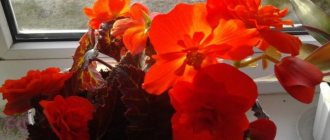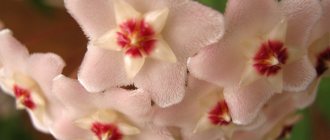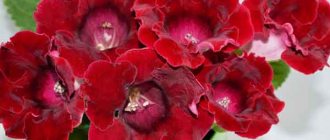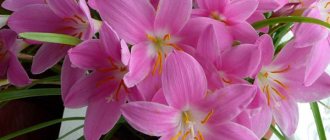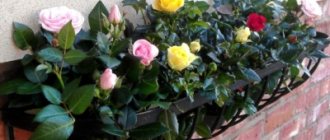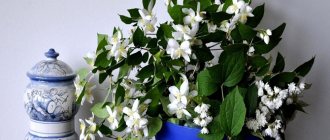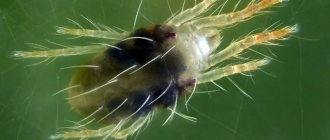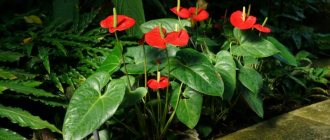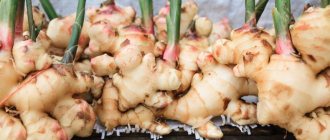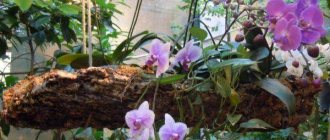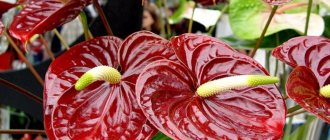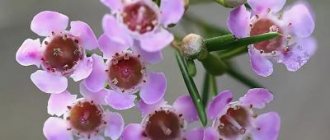If you want to decorate your home with bright flowers that will sparkle in the damp and cold seasons, then, undoubtedly, you should pay attention to the amazing Anthurium plant. Its homeland is the tropical forests of Central and South America. Anthuriums that require attention to care are ready to bloom all year round. They are not afraid of stressful situations - after them, plants quickly recover.
Botanical description
Anthurium is the most widely represented genus in the family Araceae. It covers up to 900 plant species. They can be herbaceous evergreens or vines. They also include epiphytes, which grow in the tropics on trees and are distinguished by aerial roots that hang to the ground. Anthuriums also include lithophytes that grow on rocks and stones.
The flower is distinguished by a variety of leaf blade shapes. It can be heart-shaped, spade-shaped, round or have a dissection. Growing in natural conditions, the plant turns its leaves towards the sun's rays. Blooming Anthurium looks especially beautiful.
The flowers come in a wide variety - you can find dense varieties of red, white, purple, burgundy and green shades. Some varieties have multi-colored bracts. The inflorescence has the shape of a spadix with flowers in the form of a club, cone, spiral or ball. They are located closely on the cob in diamonds or squares.
Flowers emit a variety of scents. It can be a subtle aroma or a strong fragrance. The smell can be pleasant or foul. Flowering lasts the whole year. Flowers remain on the plant for up to 1.5 months.
If you pollinate a flower, it produces yellow or orange berries with 2 seeds. The decorative quality of Anthurium deteriorates over time, which is manifested in a decrease in the size of the leaves and dryness of the trunk. In this case, the plant must be rejuvenated.
The following types of flowers are grown as indoor plants:
- Anutrium Andre is a large flower with heart-shaped leaves. The petioles are long, and aerial roots are present on the stems.
- Anthurium Scherzer - the epiphyte has short stems up to 40 cm. The leathery leaves have a dark green tint, and black dots can be seen on both sides. The bedspread has a red tint.
- The ornamental plant Anthurium magnificent has become famous - a low-growing flower with green leaves decorated with white veins.
Plant varieties and photos with them
In indoor floriculture, the two most common species are Anthurium Andre and Anthurium Scherzer. For both of these the red bract color is more typical, but there are a number of white cultivars.
Due to its large size, Anthurium Andre is most often grown in greenhouses, but is also suitable for home use. Among the most common varieties are white.
White Champion
White Champion. A variety with a yellowish ear on a high peduncle . The snow-white bract is beautifully curved. Over time, a light green tint appears.
White Heart
White Heart. The ear of this variety is bright pink with a more intense color closer to the tip, the bract is white and pointed.
Acropolis (Acropolis)
Acropolis (Acropolis). The spadix is light yellow at the base, with a bright yellow tip reminiscent of a candle flame. The bract is snow-white, the shape is close to round. This variety is characterized by large leaves .
Polaris (North Star)
Polaris (Polar Star). The cob is white, acquiring a pinkish tint over time. The bract - elongated, pointed, with beautiful curves - resembles a ray of a star. As it blooms it turns greenish.
Scherzer
Anthurium Scherzer is more suitable for rooms and offices . A distinctive feature is the cob, slightly twisted in a spiral. Among the white varieties, the most famous is Album with a white cob and a white oval bract. Scherzer anthurium varieties are described here.
Illumination
The plant prefers bright but diffused light. It can be placed either on the south side of the house or with windows facing east or west. The shade resistance of the flower allows it to grow on the north side, but you will not achieve flowering.
Winter lighting is required for bud formation. On windows with a southern orientation, flowering is possible even in winter. In hot summers it should be removed from direct sunlight.
Possible problems
Although caring for anthurium at home is not so difficult, the plant can still be capricious. It is important to constantly monitor the flower so that it develops well and is healthy.
Yellowing of leaves
Very often, inexperienced gardeners complain that the leaves on their anthuriums begin to turn yellow. Yellowing foliage is the most common problem. The cause may be improper care, the onset of chlorosis, sunburn and fungi. Also, yellowing of the leaves may begin due to too low temperatures or fungal diseases.
First of all, when the leaves turn yellow, you should pay attention to watering the plant. Perhaps the flower simply does not have enough moisture or the water for irrigation is too hard. This plant should be watered only with soft water, for which it should be settled or boiled. Perhaps the plant does not have enough fertilizer or the flower is standing in the sun.
If the cause of yellowing leaves is an ongoing disease, then urgent action must be taken. First you need to determine what exactly the anthurium is sick with. Chlorosis can be determined by examining the foliage. With chlorosis, only the foliage turns yellow, but all the veins remain green. In case of chlorosis, the plant is irrigated with iron chelate or algae solution.
Another reason for yellowing leaves may be hidden in fungal diseases. Typically, a plant becomes sick with fungus due to sudden temperature changes. It is enough to spray the flower with special preparations and adjust the temperature in the room.
Watering rules
To moisten the soil, watering is necessary at regular intervals of 3-4 days. Warm water is preferred. Winter watering can be reduced to once every 7 days. The flower is demanding on proper watering - you should not overdry the soil, but you should not create stagnation of moisture.
After watering, you need to wait and remove excess water. Do not use lime-type water or low temperature water.
Diseases and pests
Anthurium is susceptible:
- Fungal diseases such as anthracnose, septoria, as well as parasites - mealybugs, thrips, aphids. To destroy them, special fungicides and insecticides are used.
- Also, at low temperatures and a lack of microelements, the leaves may curl and wrinkle.
Among the variety of species and varieties of anthuriums, it is difficult to choose the right plant for yourself. To make the choice easier, we have prepared materials for information about Anthurium Black, including Black Queen (Black Prince), Dakota, Cavalli, Hooker, Utah, as well as pink and crystal.
Soil requirements
To plant a plant, a special mixture is required, including humus, unsifted leaf soil, peat and sand in a ratio of 2:1:1:0.5. Broken brick is added to the soil; it is also advisable to add cones, moss, and charcoal.
The use of coarse components in a volume of up to 15% of the total soil increases the movement of moisture and air in the substrate. Slightly acidic soil with a pH value of 5.5-6.5 is considered preferable.
Purchasing branded items.- Advantages of Gardena gardening equipment
- Bathhouse made of 6x6 timber
How to care
- The soil. To plant indoor plants, you can use ready-made soil, which is purchased in specialized stores or garden centers. You can also mix the soil yourself, for this you need to take leaf, turf soil, humus, peat, sphagnum moss and sand (four parts leaf, two parts each turf, humus, peat and one part each moss and sand), you should also add to the mixture bone meal. When planting or compiling the soil, I always add perlite or vermiculite; this helps aerate the soil, loosens it and allows the root system to breathe. For anthuriums, the soil is also suitable for orchids.
- Landing. As for the container, the pot should not be deep; a container that is not tall with wide edges is ideal. Be sure to put expanded clay at the bottom of the pot, or you can use shards from broken pots. Good drainage is the key to plant health, especially since Anthurium Andre is very sensitive to stagnant moisture. A little higher than the base, you can make additional holes. Anthuriums love close growing conditions, so the pot should be slightly larger than the earthen ball of the plant itself. The top layer of soil can be covered with sphagnum moss. When planting a plant, carefully remove it from the shipping pot (the one in which you bought it), carefully with the roots - they are very fragile.
- Transfer. Each plant should be replanted as it fills the pot. If the pot becomes small, the plant should be replanted. Anthuriums at a young age are replanted annually; then, once the plant is more than five years old, it is enough to replant it once every three years. But there is a peculiarity: the maximum decorative life of a plant is 1-3 years, then it needs to be renewed, divided or cuttings. When replanting an anthurium, you need to analyze and inspect the roots; if dried or rotten roots are found, they should be removed/trimmed immediately. If you notice diseases of the root system, you should treat the plant with phytosporin and completely replace the soil. When replanting, try to plant the plant at the same level as it grew in the previous pot; do not plant the anthurium too deep, as this may cause the stem to rot. It is advisable to keep the newly purchased plant indoors for several days, during which time it will get used to your room and replanting will not be additional stress for the anthurium. It is enough to remove the plant and inspect the roots. The recommended time for adaptation is a couple of weeks, but usually in stores the plants are for sale and their care is minimal, so I usually replant after two or three days, sometimes immediately after purchase.
Transplantation
For abundant flowering, regular replanting of the plant is required. Young flowers are replanted annually in the spring, and adults - once every 2 years. The container is taken shallow. When transplanting, fresh substrate is added. You can use soil for aroids or orchids. A drainage pad is laid out at the bottom. When transplanted, the children are seated.
Flowering conditions
If favorable conditions are created for this plant, it will bloom almost throughout the year. If there is no flowering, then it means that errors were made in the care.
- If the dormancy regime is not observed, the flower may not release buds. In order for next year's buds to set, the anthurium must be kept in a cool room in winter at a temperature of about +15 degrees. Watering in winter is reduced.
- You cannot feed this plant in autumn and winter, otherwise it will not bloom.
- In winter, anthuriums suffer from a lack of natural light. Therefore, during short daylight hours, additional lighting should be provided.
- Anthurium simply will not bloom in a large pot. For the flowering of this plant, a properly selected pot is of great importance. Until the roots fill the entire volume of the pot, you should not transfer the plant to a larger container. It makes sense to get abundant flowering from the anthurium by transplanting it into a tighter pot.
- If the soil in the flowerpot is old and poor, then the plant may also not bloom. The flower simply will not have enough nutrients to set buds. The soil needs to be updated annually.
- If the flower grows at low temperatures, then you may also not wait for it to bloom. The optimal temperature for all anthuriums after dormancy is +20 degrees.
- When the plant has finished blooming, all faded flowers should be cut off.
Reproduction
The indoor anthurium flower can reproduce in several ways, but the most effective is the use of children and division of the plant. Reproduction occurs in the spring during planting. The division is carried out using a sharp knife, and the sections are treated with crushed coal. After division, the plants are placed in different containers.
Watering is done carefully to prevent excessive soil moisture. It is effective to root a piece of stem containing a leaf and an aerial root. This cutting forms a root.
Seed propagation is also possible. However, not everyone can cope with the task in indoor conditions. When flowering begins, Anthurium should be pollinated by running a cotton swab over the cob. Cross-pollination is necessary for 2-3 days, repeating the procedure up to 3 times a day. After the berries appear, they wait until they ripen - approximately 9-12 months.
When propagating, you should take ripened seeds and clean them of pulp. Then they are planted in pots. Placed on top of the soil, the seeds are pressed a little and sprinkled with water. The seedlings are transferred to a greenhouse and wait up to 2 weeks.
- Ktenanta - types, cultivation characteristics and instructions for care at home. 110 photos of plants
- Guzmania: planting, replanting, propagation of different species and rules for watering the plant. 135 photos of a flower and video tips for caring for it
- Gloxinia: growing and care at home. 165 photos of a flower and rules for planting it
After the formation of the second leaf, a dive is performed, and after 2 months this is done again. When the seedlings have 5-6 leaves, they can be planted in pots. In the third year, flowering occurs, as can be seen in the photo of anthurium.
Flower rejuvenation
What significantly distinguishes pink anthuriums from many indoor plants is the need for rejuvenation. The lower leaves gradually begin to die off, exposing the trunk, thereby disturbing the lush structure of the rosette, as well as the decorative appearance of the flower. And as a result, leaves begin to appear smaller and smaller. Rejuvenation is carried out not by age, but by appearance and only directly during the transplant.
There are two update options:
- It is necessary to separate the side shoots along with the roots and grow new bushes from them. Deepen the old bush a little into the ground and grow it until it is replaced by a new young plant.
- It is necessary to cut off the upper part with aerial roots and root it in slightly moistened soil and under a hood. And for an old plant, reduce soil moisture and just keep it slightly moist. After some time, many rosettes will appear on the trunk; they can then be separated and planted as separate bushes.
Flower design.
Anthurium, regardless of type or variety. Excellent as a single plant. You can create a composition from several types of anthurium. Pink anthurium will go well with white or purple anthuriums.
If you use varieties with pinkish-white inflorescences. You will get a beautiful composition with different colors, pink tint. From several anthuriums, which will definitely fit into your interior. Combine different colors of anthurium inflorescences in one composition. An ideally selected pot to match the color of the foliage or inflorescence will highlight the individuality of the anthurium. Good luck to you.
Indoor anthurium
Let's take a closer look at indoor anthurium, varieties with photos and names:
Anthurium Andreanum. A flower from tropical Colombian and Ecuadorian forests is a symbol of Hawaii, which is why it is called the Heart of Hawaii. It decorates not only rooms, but also landscapes. On its basis, many new forms and colors of the crop have been created with long-lived inflorescences that retain their decorative effect for 2.5-4 weeks.
On the short stem of the flower there are oval-lanceolate leaves with heart-shaped bases. Length of plant parts:
- leaves – 24-30 cm, width – 8-13 cm;
- petioles with bends – 26-35 cm;
- yellowish cob (inflorescence) – 5-9 cm;
- the length and width of the heart-shaped spathe (bract) is 18-20 cm.
The blanket comes in different colors: red, pink, salmon, white, as well as two-tone (Obake) and green (Midori), purple and brown. Surrounded by a blanket, the yellow-white inflorescences remain in the flowering stage for almost a month. Then the blanket becomes rougher, but does not fall off.
Anthurium Scherzerianum. It is called the “pigtail” because of its low growth, narrow leaves and thin spiral-shaped spadix, and also “flamingo flower” due to its orange curved inflorescence. The leaves are dark green, have a pointed tip and edge on both sides, are linear or lanceolate in shape, the base is obtuse or wedge-shaped. They are matte below and glossy above, reach a length of 6-25 cm, a width of 1.6-6.6 cm. They are supported by cylindrical petioles 4-20 cm long and 1-3 mm in diameter. The bright red bedspread with or without a dotted pattern is shaped like a heart bent downwards.
Anthurium Crystal (Anthurium crist). The appearance is distinguished by the deep green color of the leaves with the presence of light veins and neighboring areas, and the greenish-yellow coloring of the cob. Due to the presence of a caudex - a thickening of the trunk in the form of a ball, bottle or column and a rod root system, it is placed in the substrate. The petioles of large, spreading leaves have veins with a silver tint. The leaves, 20-30 cm long and 16-20 cm wide, are oval in shape, deeply lobed at the base, and narrowly pointed at the apex. The peduncle reaches a length of 25-50 cm, and the flower - 20 cm. Around the flower there is a light green blanket with a purple tint. The berries are purple. The diameter of the stem is 2-2.5 cm, the length is 24 cm, it has short internodes.
Anthurium mix by Andre and Scherzer
In the process of crossing the Andre and Scherzer varieties, the Anthurium mix of Andre and Scherzer was obtained. Their bedspread is colored in tones: milky white, pink, orange, deep red and greenish. The plant reaches a height of 50-70 to 80 cm. It is grown for office and home use in flower pots, and in greenhouses for cutting and adding flowers to bouquets.
The leaves are dark green, 6-25 cm long, 1.6-6.6 cm wide, with a pointed tip. They are linear and lanceolate in shape, the base is obtuse or wedge-shaped. The surface of the leaves of the Scherzer and Andre anthurium mix is decorated with a thick edge on both sides, matte below and glossy above. The petioles reach sizes of 4-20 cm in length and 1-3 mm in diameter.
Coloring of Anthurium varieties Andre and Scherzer
Let's look at the types of Anthurium mix Andre and Scherzer according to color and name.
White
Among the white varieties, the most popular are:
- Champion White;
- Sumi.
- Dakota;
- Sierra Magic;
The white-pink variety includes Princess Amalia Elegance.
Reds
The most famous red varieties include:
Turenza – Perfectred.
Among the red-green crops, a variety of Anthurium adrianum called Baby Boom is known. Other popular varieties of anthurium mix by Scherzer and Andre include: Almera, Bugatti Veyron, Champion Red, Dynamite Red, Red King, Royal Champion Royal Champion), Success Red.
Pink
The group of pink varieties includes anthuriums with a wide heart-shaped or elongated perianth and shiny bright green leaf plates up to 30 cm in length:
- Jolie;
- Lady Love;
Among the pink representatives of anthuriums of the species Andre Otazu, Pink champion, Lentini pink and Mystique, the last two are similar in shape, but differ in the color of the cover. In Mystique, pink gracefully fades into green. The second variety, Pink champion, has many leaves and small graceful inflorescences. The Andre Otazu variety has many burgundy inflorescences, but fewer leaves.
Purple and blue
The most popular varieties of the crop are purple (lilac or lilac): Cavalli Purple, Picasso Purple, Utah and Fiorino. The tulip-shaped cover of the Tulip anthurium and the intense shade of the extraordinary cover of the small Fiorino made these species especially popular. The laconic forms of plants, which bloom for about 3 months, fit perfectly into the interior of home premises and create a comfort zone there.
As for the blue color, it is impossible to breed a similar color of the bedspread, due to the absence of the blue or blue gene. But by introducing special ink into the peduncle through injection, you can get the desired shade. For example, in Princess Alexia Blue, the spadix and spathe acquire an ultramarine hue instead of green due to injections into the root system. Using the same technology, the Princess Alexia Yellow flower produces a bright yellow color of the spathe and spadix, and Picasso Blue (blue) has a tone corresponding to its name.
Yellow
Anthurium Princess Alexia has many stems, elongated towards the end, and flowers with a pale yellow tail and snow-white bracts. Picasso Yellow, Vanilla, and also Princess Alexia Yellow with a bright yellow cob and bedspread are popular (the shade is obtained by introducing special ink into the peduncle).
Greens
The green varieties of Anthurium mix by Andre and Scherzer include the following varieties: Picasso Green, Midori, Green King, Baby Green, Send Flowers - green anthurium.
Green varieties of anthuriums (given with a description below) are popular with florists. They highlight men's and women's bouquets well with emerald buds and large petals and add freshness and volume to the composition. According to legend, the plant brings a man even more passion, strength and courage, which is why it is called “male happiness.”
The deciduous and decorative Anthurium magnificum looks especially good indoors. It is low-growing and similar to Anthurium crystallinum. It has beautiful large dark green leaves up to 20 cm long and 16-20 cm wide, with a velvet tint and white-silver veins. There are different transitional options among the forms of this flower.
